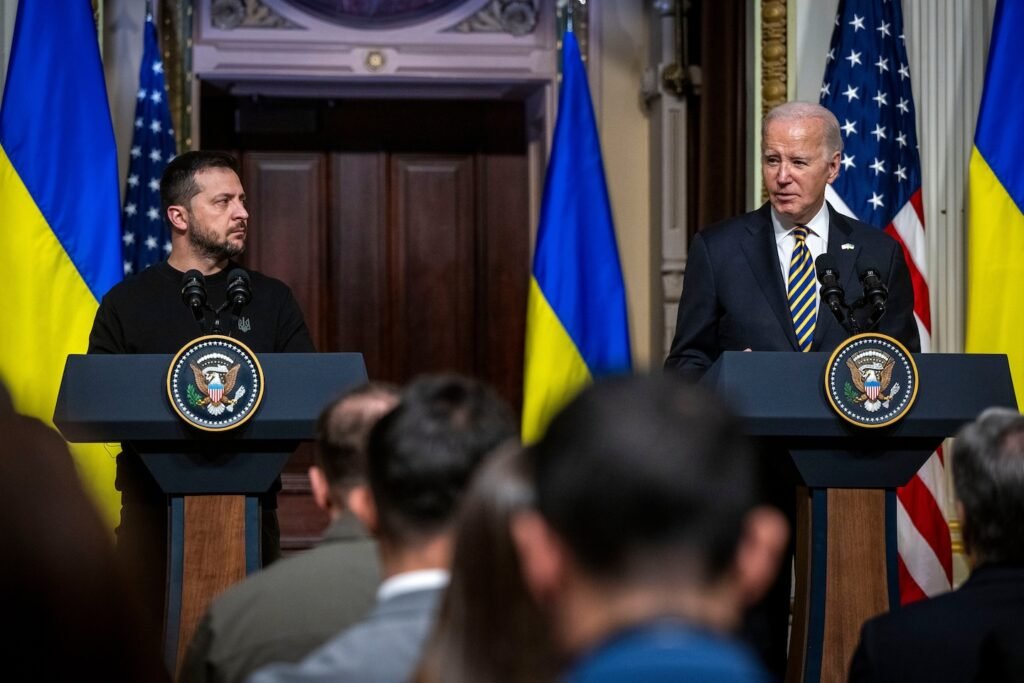But for Ukraine, the stakes are even higher.
More than two years after Russia launched a full-scale invasion, Ukraine is still fighting bravely against the relentless aggression of Russian President Vladimir Putin, who has relentlessly launched missiles and drones into Ukrainian territory and targeted Ukraine’s energy infrastructure. After a six-month delay due to congressional inaction, U.S. military aid to the Ukrainian military is back on the way, but the defense forces remain outmanned and outgunned.
“We need to ensure the security of our cities,” Andriy Yermak, chief of staff to President Volodymyr Zelensky, told a small group of reporters in Washington this week. “For us, this is of utmost importance. We expect serious and strong decisions at the Washington summit.”
NATO leaders will reportedly announce the opening of a new NATO office in Kiev, which will be touted as a “bridge” to NATO membership. They will also announce a joint financial commitment of around $40 billion in aid to Ukraine through 2025. This is a not-so-subtle attempt to head off the risk of former President Donald Trump being re-elected. No one knows what Trump would actually do if elected, but he has threatened to withhold aid to pressure Ukraine into negotiations.
Ukraine had hoped for further progress, including a formal step toward membership, similar to the recent milestone it achieved with the European Union. But Ukrainian officials have been reluctant to air their discontent publicly after Zelenskiy’s frustrations nearly derailed a NATO summit in Lithuania last year. Instead, Ukrainian leaders are seeking more concrete items that could make a difference on the battlefield. Ukraine needs more air defense systems, Yermak said. Allies have promised to send Ukraine more Patriot missile systems, but it’s unclear how many would be delivered and when.
“We want to have a very strong political commitment to ensure that the necessary supplies are agreed and delivered by the end of the year,” Ukrainian Deputy Prime Minister Olha Stefanishina said.
Ukrainian leaders have also called on the Biden administration to further ease restrictions on the use of U.S. weapons against military targets inside Russia. The White House decided in May to allow Ukraine to use U.S. weapons against some Russian targets involved in the Kharkiv offensive. But Ukraine still is not allowed to use U.S. weapons against Russian air bases that have been used in attacks on several Ukrainian cities.
“Stop letting Ukraine fight with one arm tied. They’re artificially limiting Ukraine’s ability to defend itself,” House Intelligence Chairman Michael R. Turner (R-Ohio), who led a congressional delegation to Ukraine this week, said in an interview.
The White House worries that allowing Ukraine to expand its attacks inside Russia would be provocative, but Turner said Putin has already been provocative: “Ukraine needs information about valid military targets inside Russia and the approval to do so.”
To be sure, the Biden administration has done a lot for Ukraine. At the Group of Seven summit last month, Biden and Zelensky signed a 10-year security agreement. The administration is moving ahead with plans to provide Ukraine with an additional $50 billion in loans, backed by frozen Russian assets held in Western banks. But there remains a gap between Ukraine’s goal of recapturing as much territory as possible and a U.S. plan for Ukraine that is focused on maintaining the status quo.
Next week’s summit, by deepening Ukraine’s integration into NATO, will serve as a rebuttal to Putin’s argument that the war should be resolved on his terms, Sen. Jeanne Shaheen (D-Mass.) told me. “We must continue to demonstrate, in a bipartisan way, that Russia does not have a veto over Ukraine’s aspirations to join NATO,” she said.
But that’s only one piece of the puzzle. With the possibility of Trump’s reelection looming, the best way to ensure Ukraine’s long-term security is to give it the capability to actually defeat Russia. That means accelerating the delivery of air defense systems, fighter jets and long-range rockets, and helping Ukraine develop its own defense production to reduce its reliance on the West.
Biden should also use the NATO summit to explain to the American public why success in Ukraine is important to U.S. national security interests. The more Americans understand that it is safer and cheaper to stop Putin in Ukraine than to wait for him to attack NATO later, the harder it will be for Trump, or any future administration, to undermine that mission.

